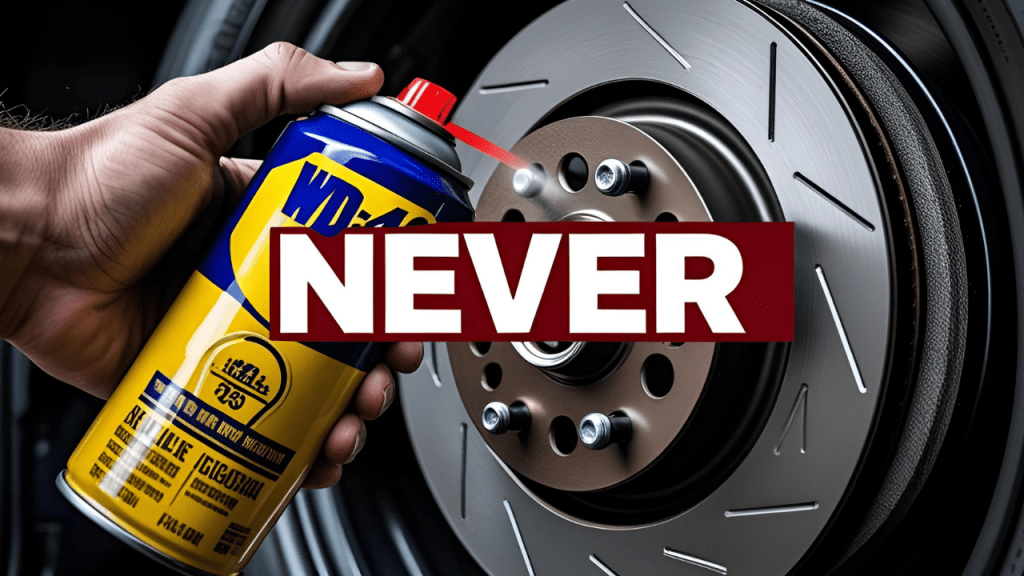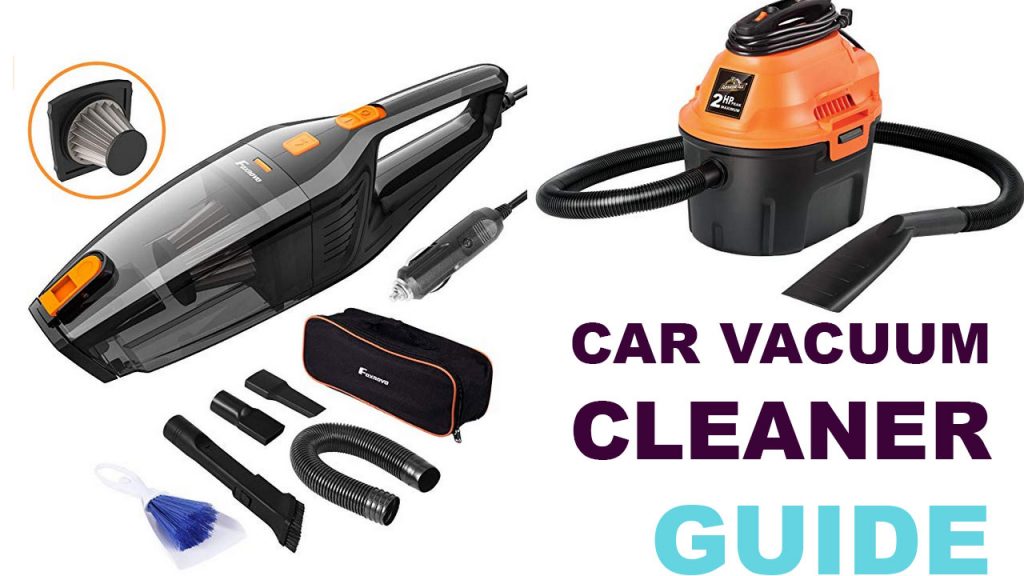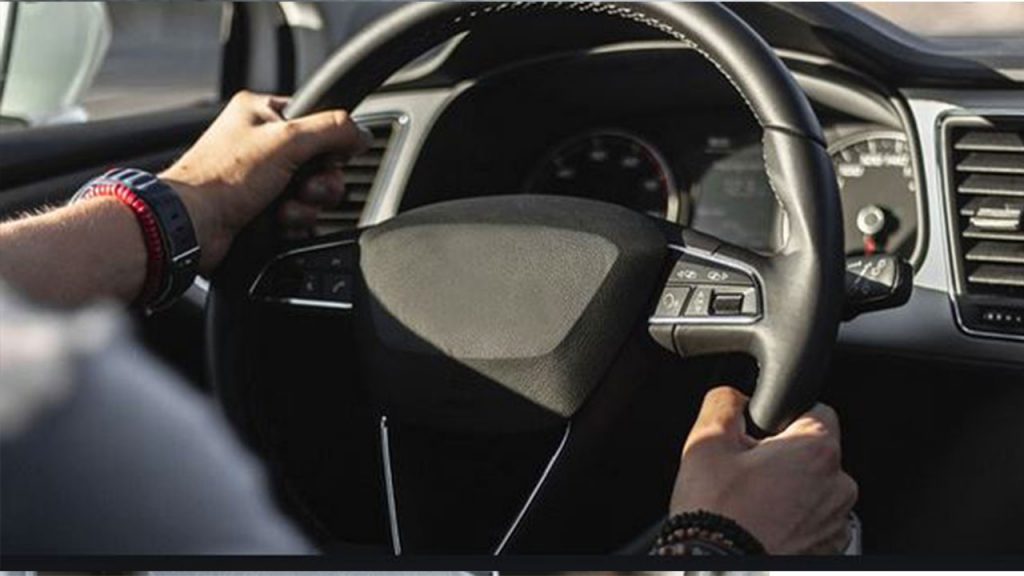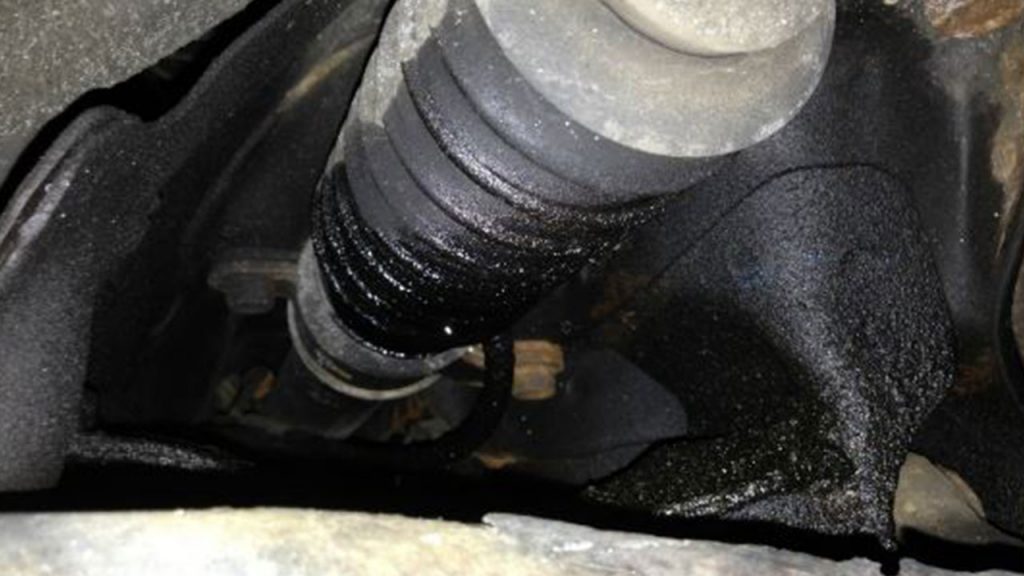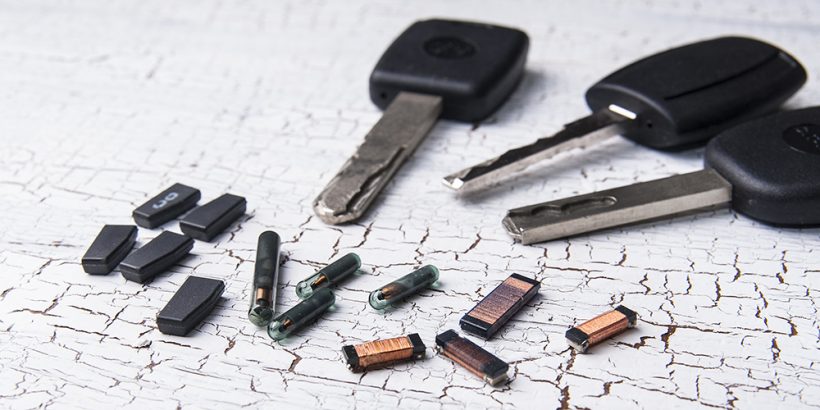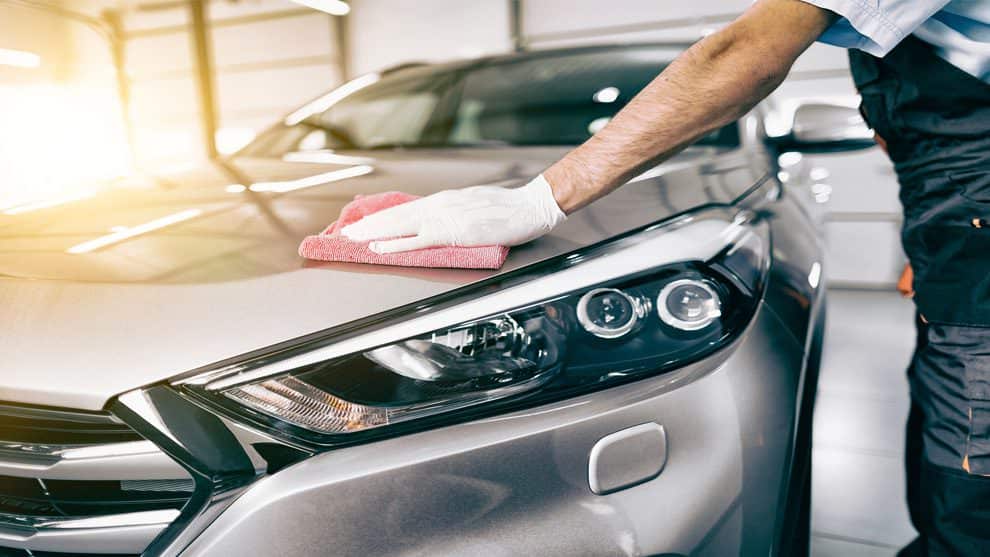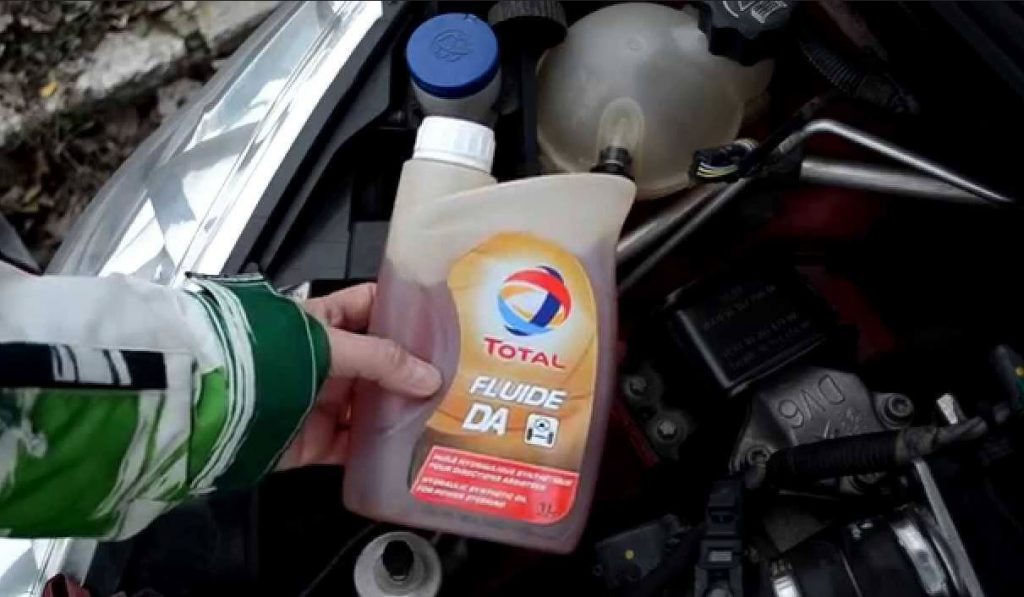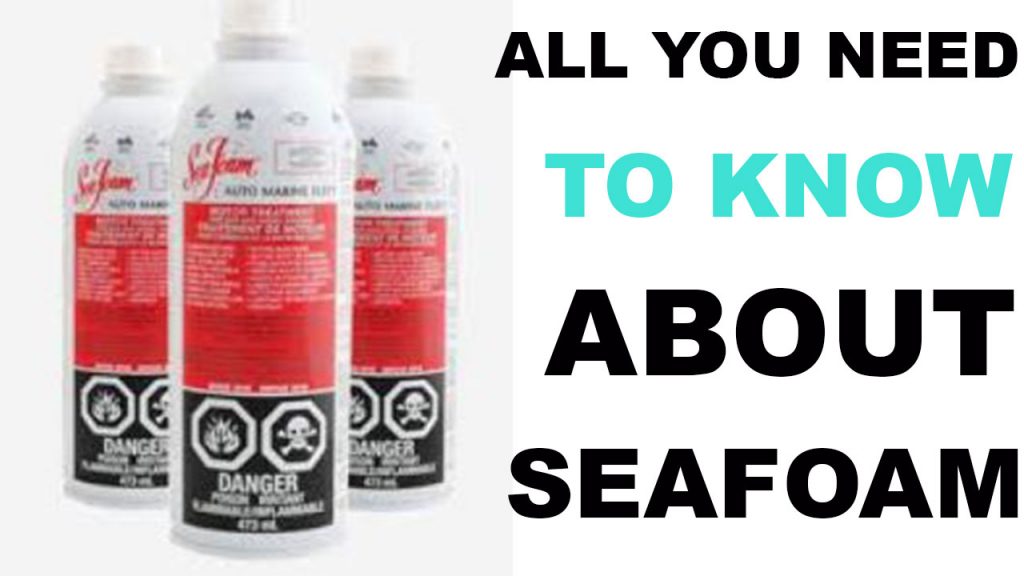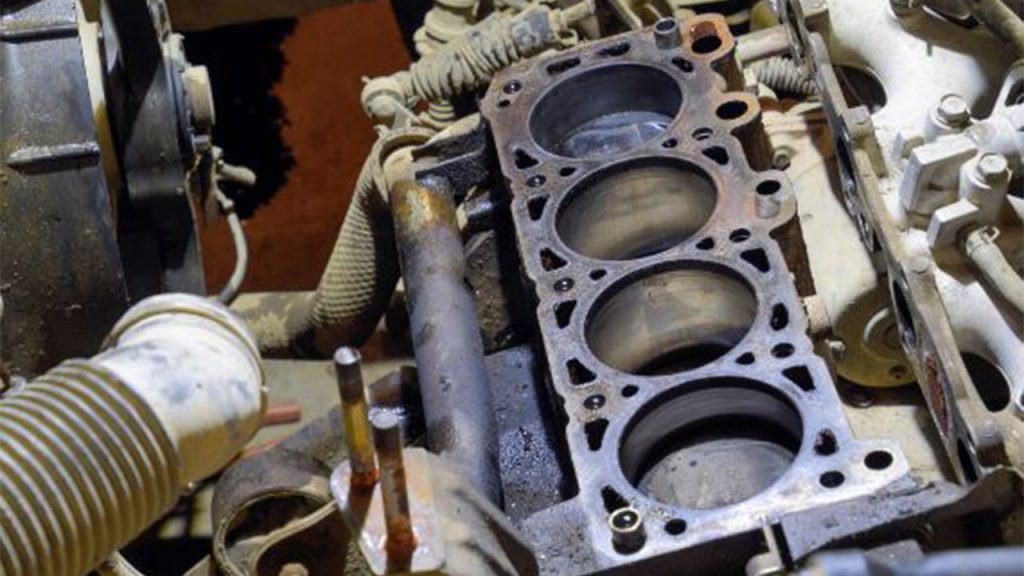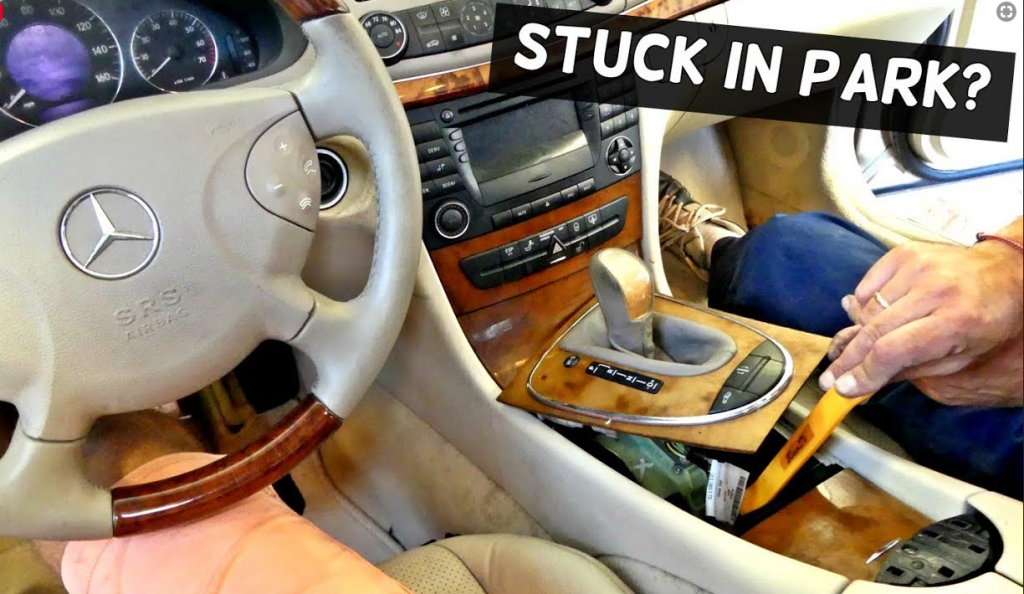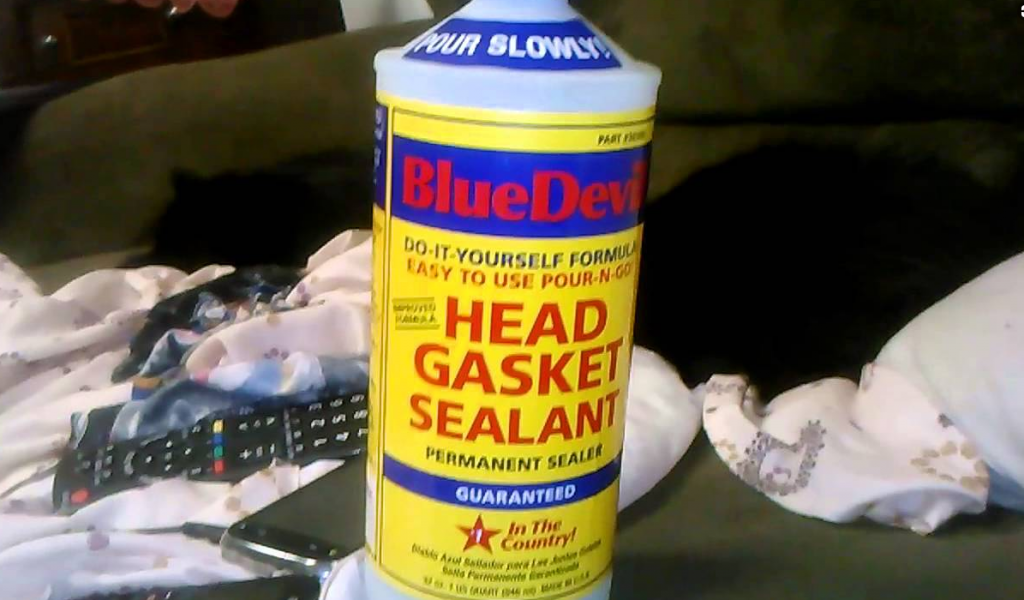You probably think WD-40 is helping your car. But if you’re using it the wrong way, and a lot of people are; it’s doing more harm than good to your car. I am talking, Belts slip, brakes fade, locks jam, etc., and you won’t even see it coming. In this article, I’m going to show you five of the most common mistakes people make when using WD-40 on their cars and how those mistakes can seriously backfire. Then I’ll walk you through the right way to use WD-40 and what products are better suited for specific jobs.
8 Ways WD-40 Could Ruin Your Car and What To Use Instead!
Mistake #1: Spraying WD-40 on Your Belts
Let’s start under the hood, where one of the biggest WD-40 mistakes happens.
A lot of people try to fix a squeaky serpentine or accessory belt by spraying WD-40 directly onto it. And sure, the squeak might stop temporarily, but what you’ve actually done is coat the belt in oil, and belts are designed to operate dry.
Why is this bad? These belts spin some of the very essential parts of your vehicle, such as your alternator, water pump, power steering pump, and AC compressor. They need friction to grip and spin the pulleys. Once coated in WD-40, that friction drops, and the belt starts slipping. That slip can lead to:
- Poor charging from your alternator
- Overheating from a non-spinning water pump
- Steering stiffness
- Poor AC performance
Even worse, the belt could start to deteriorate faster, cracking or fraying, because WD-40 breaks down rubber over time.
What to do instead: If your belt is squeaking, inspect it first. Check for visible wear like cracks, fraying, or glazing. Make sure it’s properly tensioned, because loose belts often squeak. Also, inspect the pulleys – a failing bearing could be the real cause of the noise. And if you do need a lubricant, use a belt dressing specifically made for drive belts.
Mistake #2: Spraying WD-40 Inside Car Locks in Hot Climates.
This might seem helpful, especially when a key sticks,but in hot climates, spraying WD-40 into your car’s locks is a recipe for trouble.
Sounds like a quick fix, but in the heat, WD-40 evaporates fast and leaves behind a sticky residue. Over time, this residue collects dust and makes the lock even more jammed than it was before.
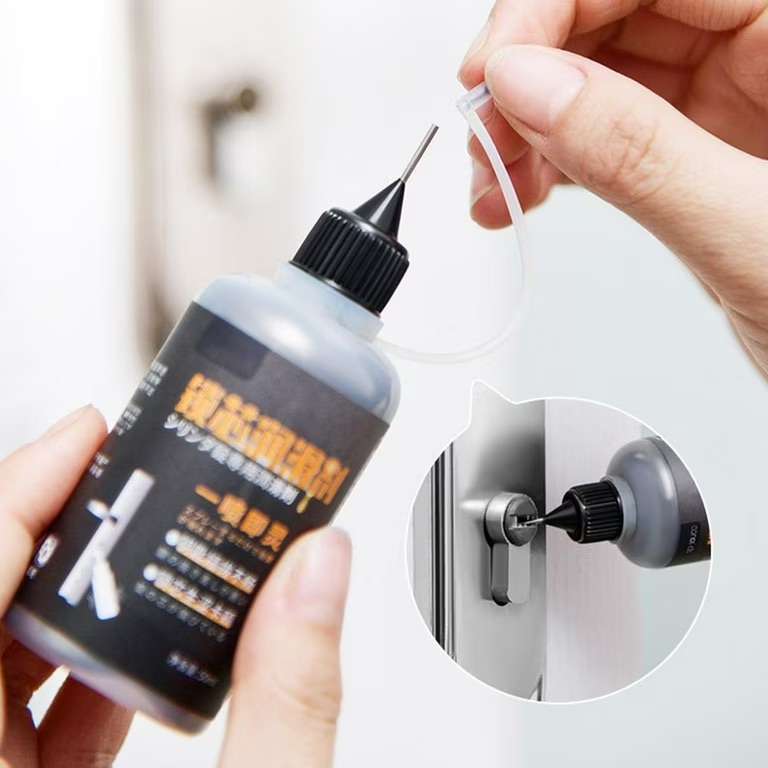
What to use instead? A dry graphite powder lubricant is the way to go. It doesn’t attract dirt, handles heat better, and keeps your lock mechanisms running smoothly, especially in summer months.
Mistake #3: Spraying WD-40 on Your Car Paint.
Some people suggest using WD-40 to make faded paint look shinier. While it might add a short-term gloss, this hack is more damaging than helpful.
Here’s why:
- WD-40 leaves behind an oily film that attracts dust and grime
- It can start breaking down the clear coat, the very thing protecting your paint
- It makes future waxing, polishing, or paint correction harder due to the residue
It’s often a trick used before selling a car, to make it look nice quickly without actual detailing. But it’s cosmetic at best and damaging at worst.
What to use instead: If your paint is dull, go for:
- Carnauba wax or synthetic sealants to restore shine
- Ceramic coatings for long-term protection and depth
- Paint correction products like polish or compound if the paint is oxidized
These products are made for automotive paint and bond with it properly.
Mistake #4: Using WD-40 on Brakes.
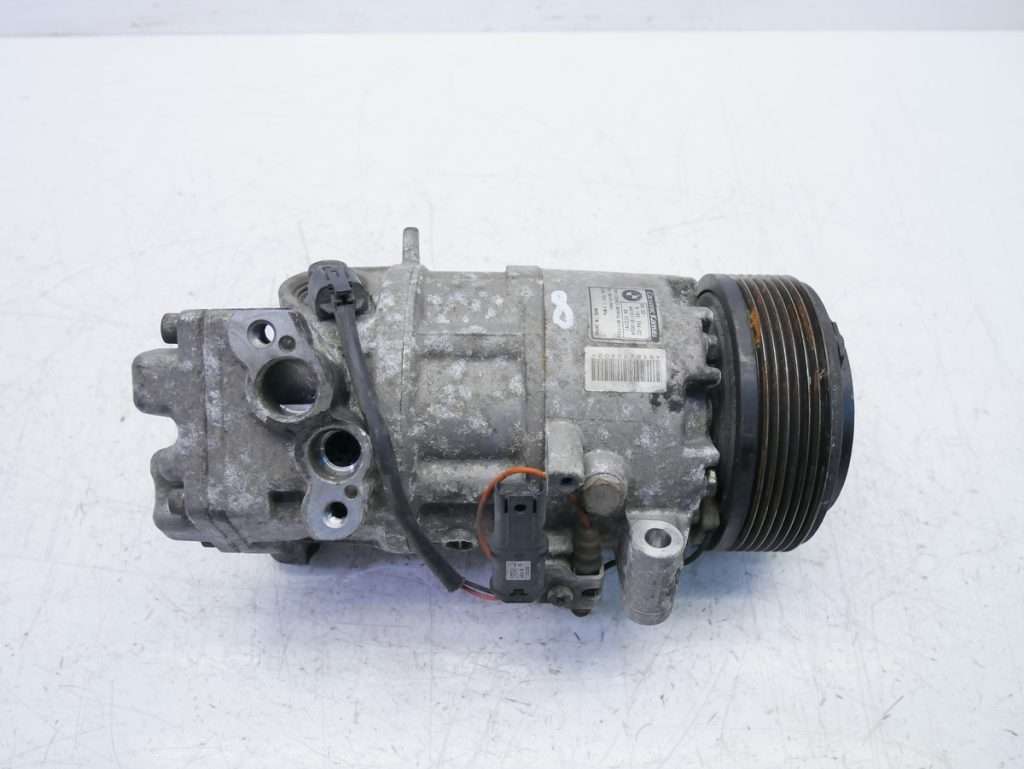
This mistake is less common but incredibly dangerous when it happens. Some people think WD-40 can help silence squeaky brakes. That’s a big no.
Think about it, WD-40 is a lubricant, and brakes need friction. Brake pads and rotors rely on friction to stop your car. If you apply WD-40 to any brake components:
- You risk reducing braking power dramatically
- You contaminate the pads and rotors
- You create unsafe driving conditions
Even just a light mist on your rotors can create a thin film that turns into brake fade under pressure.
What to do instead: If your brakes are squeaking, clean them using a brake parts cleaner – it evaporates quickly and doesn’t leave residue. If the noise persists, your pads may be worn, improperly installed, or you might need anti-squeal shims.
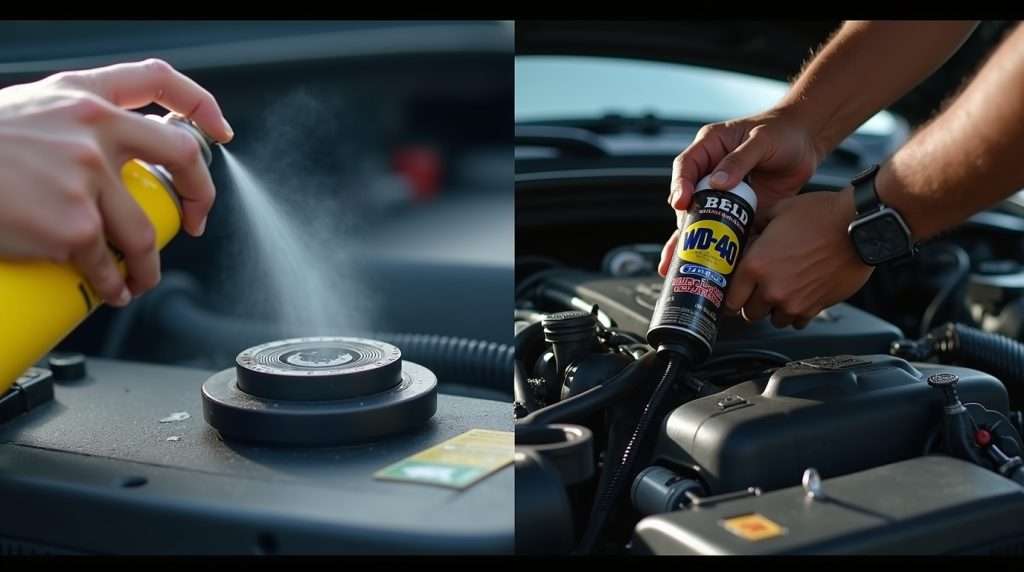
Mistake #5: Using WD-40 as a Long-Term Lubricant
Here’s a truth many don’t know: WD-40 is not a long-lasting lubricant.
It was originally made as a water displacer (that’s what the WD stands for). It dries quickly, and while it loosens things and temporarily lubricates, it doesn’t stick around.
People spray it on:
- Door hinges
- Hood latches
- Gas cap doors
- Wiper arm bases
And while it fixes the squeak, it usually returns within days.
What to use instead:
- For metal-on-metal parts: Use white lithium grease
- For rubber seals and weatherstripping: Use silicone spray
- For locks: Try graphite lubricant
These products last longer and offer real protection.
Mistake #6: Spraying WD-40 on Tires for a Shine.
This one might shock you: people still spray WD-40 on their tires thinking it’s a cheap shine trick. Sure, they look glossy and new for a little while, but underneath, you’re weakening the very thing that keeps your car connected to the road.
WD-40 is petroleum-based, and over time, it can soften and degrade rubber. That means:
- Reduced tire life
- Loss of traction
- Compromised safety in wet conditions
Even worse? Spraying it on the tread area reduces grip, which could make braking dangerous.
What to use instead: Use a proper tire shine or tire dressing designed for rubber. These not only make your tires look great but also protect against UV damage, cracking, and drying without creating a slippery surface.
Mistake #7: Spraying WD-40 Inside the Car Cabin.
Using WD-40 on dashboard hinges, seat rails, or plastic trim might seem like a clever shortcut, but it isn’t.
WD-40 leaves an oily film that attracts dust and makes interior surfaces greasy. This makes the cabin feel messy and can lead to a buildup that’s tough to clean off later.
If something inside your car squeaks or sticks, use a silicone-based spray designed for interior plastics and cabin use. It won’t leave a mess and lasts longer.
Mistake #8: Using WD-40 for Long-Term Rust Prevention.
This one’s common. People spray WD-40 on suspension parts or undercarriage areas, thinking it’ll prevent rust all winter. But WD-40 isn’t designed for long-term rust prevention.
It evaporates and leaves areas vulnerable again after just a few days or weeks.
If you want lasting rust protection, use products like:
- Fluid Film
- Eastwood Rust Encapsulator
- POR-15
- Or professional-grade undercoating sprays
Use WD-40 to clean the metal, but coat it with a rust preventer afterward.
What are the best ways to WD-40?
What WD-40 Is Actually Good For. Now that we’ve covered what not to do, let’s talk about what WD-40 actually excels at. Because when used properly, it’s a seriously handy product, especially for automotive maintenance and your home.
Use #1: Displacing Moisture from Electrical Components.
One of the original purposes of WD-40 (that’s what the “WD” stands for, water displacement) is to remove moisture from wet parts.
If your vehicle’s electrical parts get wet from driving through deep water, pressure washing your engine bay, or a heavy downpour, WD-40 can help remove moisture and restore function.
A light spray on:
- Spark plug boots
- Coil packs
- Electrical connectors
- Or wiring harnesses
…can push water out and get your car running right again.
Just remember: this is a temporary fix. For long-term protection, follow up with dielectric grease to seal those connections.
Use #2: Freeing Up Rusted Bolts and Nuts.
This is where WD-40 shines. If you’ve ever tried removing a bolt on an older car, especially on the exhaust, suspension, or brake lines, you know what rust can do.
WD-40 breaks down rust and helps loosen seized bolts, reducing the chance of snapping them off. Just spray it on, let it soak, and then use a wrench or impact gun.
Pro tip: After loosening the bolt, reapply to the threads before reinstalling. It’ll make removal easier next time.
Use #3: Silencing Squeaks and Lubricating Parts. Squeaky doors? Grinding trunk hinges? WD-40 can eliminate noise and make movement smoother. It’s great for:
- Hood and trunk latches
- Door hinges
- Wiper arm bases
- Window regulators
- Fuel door hinges
It also works for locks starting to stick, especially in winter. A small spray in the keyhole can help free things up.
But again, follow it up with white lithium grease or silicone spray for a lasting fix.
Use #4, Emergency Fixes on the Road. Here’s why I always recommend keeping a travel-sized WD-40 in your glovebox:
- Wipers squeaking in the rain? Spray the hinge.
- Frozen door lock? Quick spray.
- Battery terminals corroded? WD-40 can help clean them up.
It’s not just for mechanics. WD-40 is a smart backup tool for anyone who drives.
Bonus Tip: The Power of Pairing WD-40 with Silicone Spray. Here’s a maintenance combo that most people don’t know,but it makes your quick fixes last much longer.
Think of WD-40 as the cleaner and starter. It breaks rust, displaces water, and loosens stuck parts. But it evaporates quickly.
After using WD-40:
- Follow it up with a few sprays of silicone lubricant.
- Silicone sticks better, lasts longer, and creates a water-resistant barrier.
Use this combo on:
- Rubber seals
- Door tracks
- Sliding windows
- Trunk and hood hinges
If you’ve ever had your doors freeze shut, this combo alone can save you hours.
Now, if this saved you from making one of these mistakes, we’ve got more DIY fixes and car-saving tips on the way. Feel free to look around. Here is one for you: HOW TO CLEAN ENGINE BLOCK WATER PASSAGES

